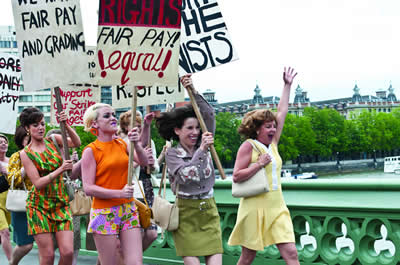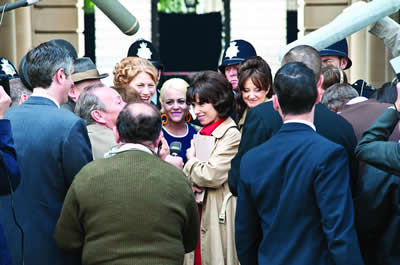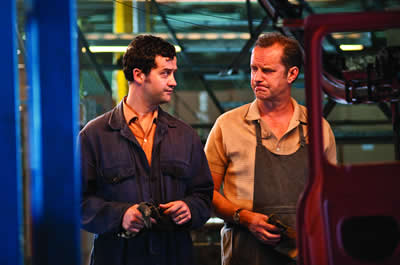Images of Britain
Look through these stills from Made in Dagenham (click to enlarge) and, with a partner, discuss the questions below:
In pairs, talk through the following questions about your understanding of the terms 'British' and 'Britishness'.
- What symbols and icons of Britishness can you spot in these images?
- What values and attitudes of the characters appear to be represented by these images? Are these traditionally British?
- Historic achievements in the fight for equal pay are being celebrated by Made in Dagenham. What message is the film sending about the British people involved? Who do you think this message is intended for?
- The Commission for Racial Equality's research into Britishness found that for some participants 'the British were exclusively associated with white English people'. To what extent is this interpretation of Britishness represented in these images from Made in Dagenham? How do you account for this?
- The film is set in 1968 when the Trade Union Movement in Britain was strong. To what extent do these stills suggest Made in Dagenham is a film about working people and their struggle for equality? How is this similar or different from other British films you have seen?
- From these stills, what other representations of Britishness might you expect to see in the film? What representations of Britishness do you think might be missing from the film?



